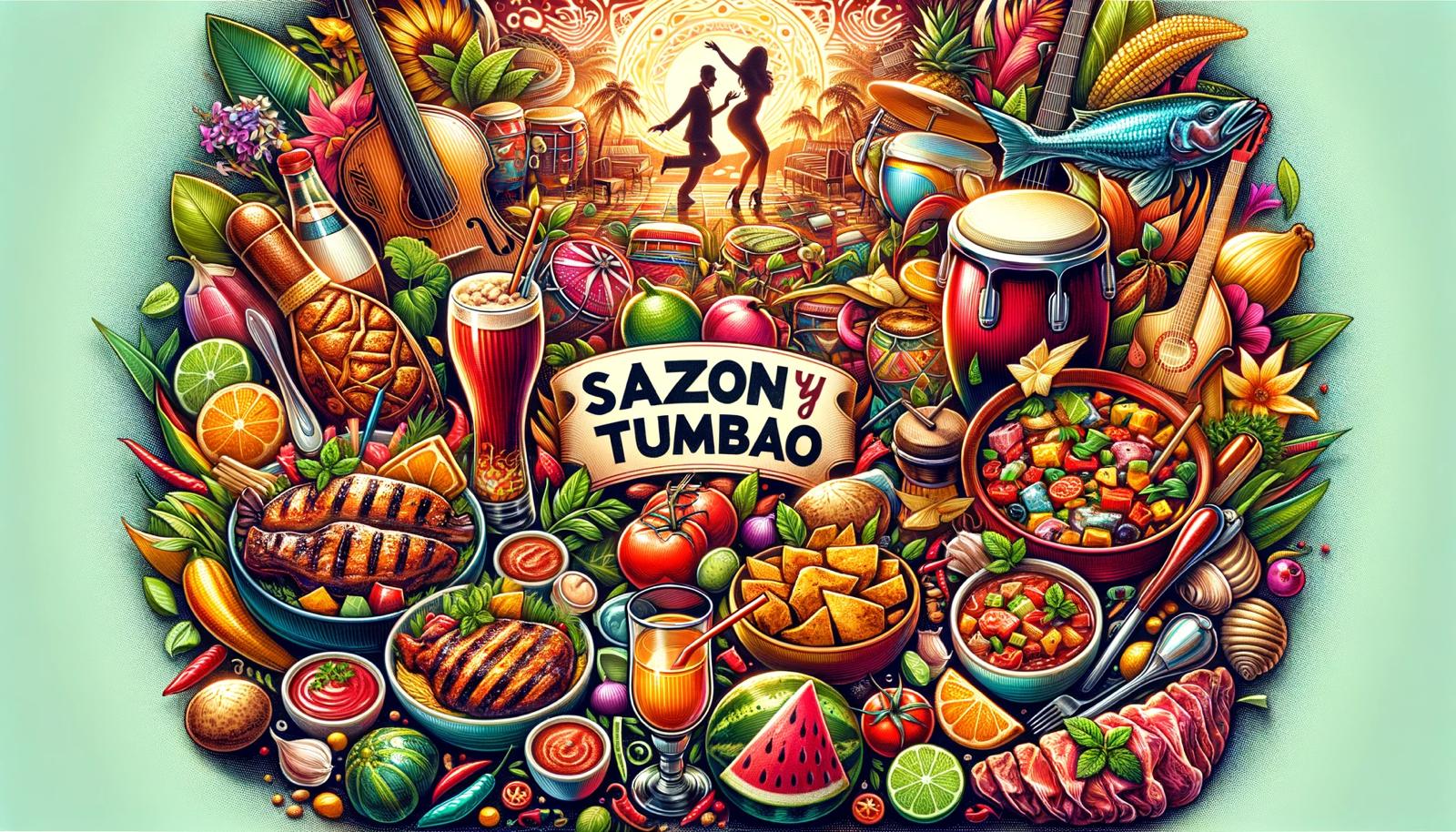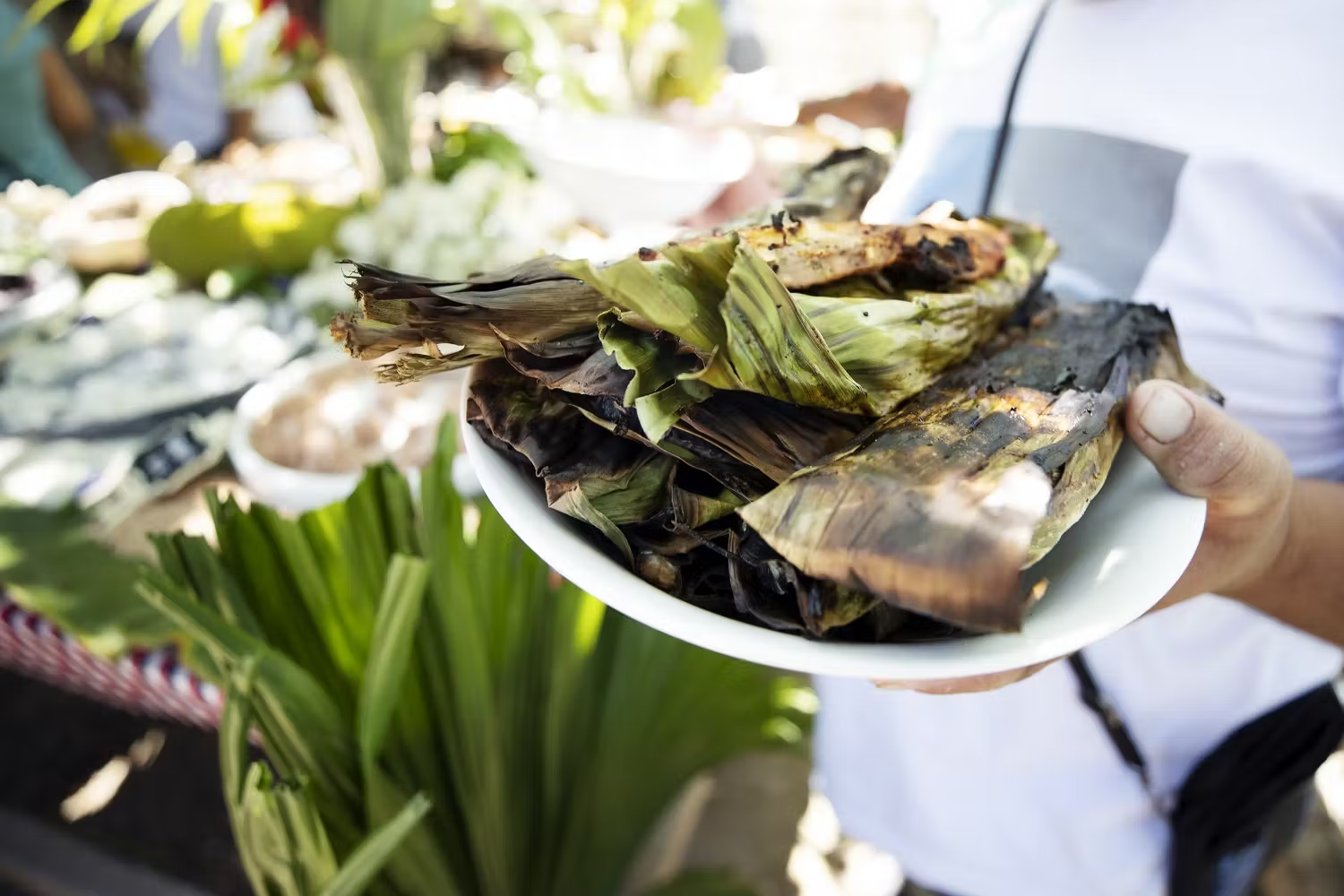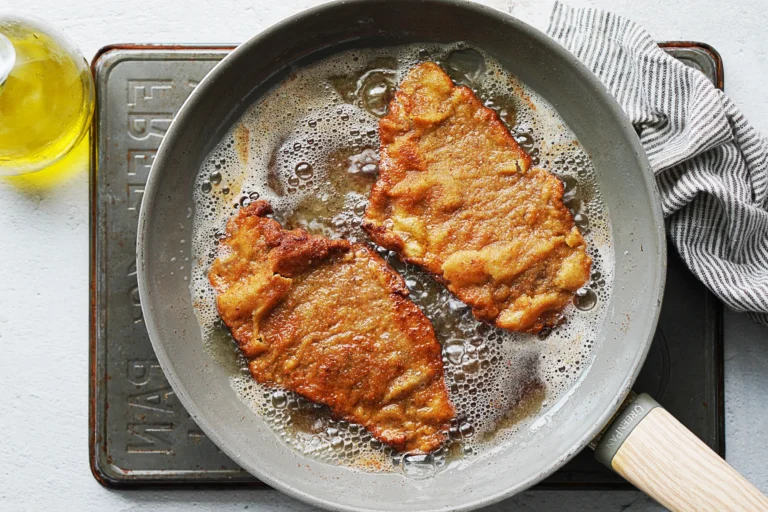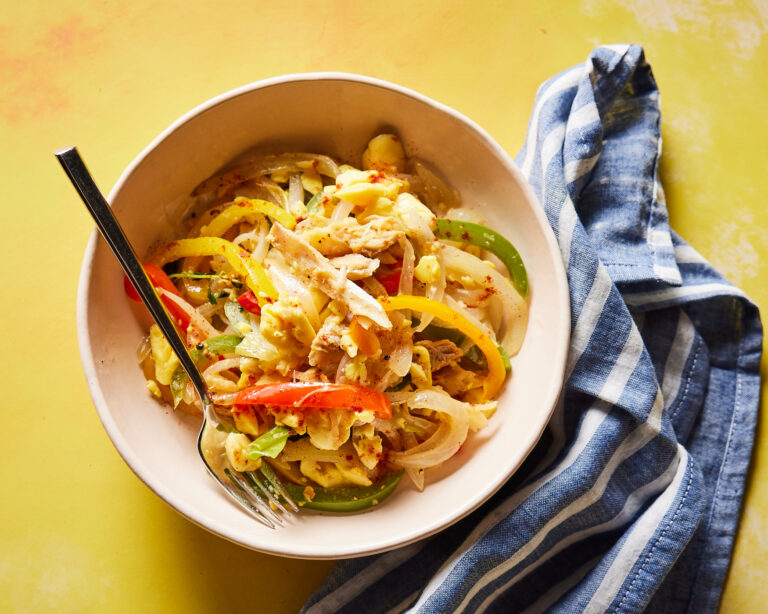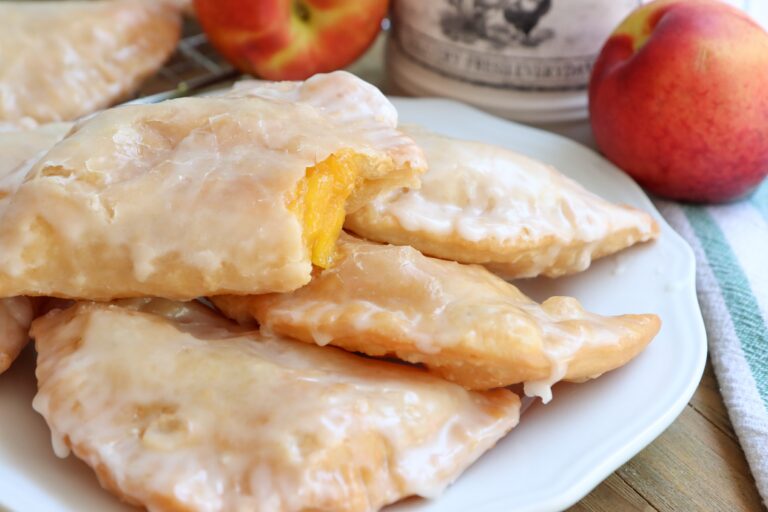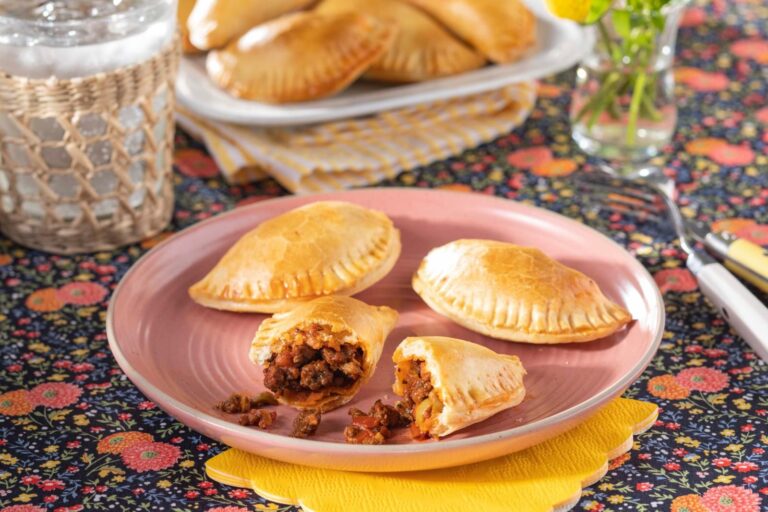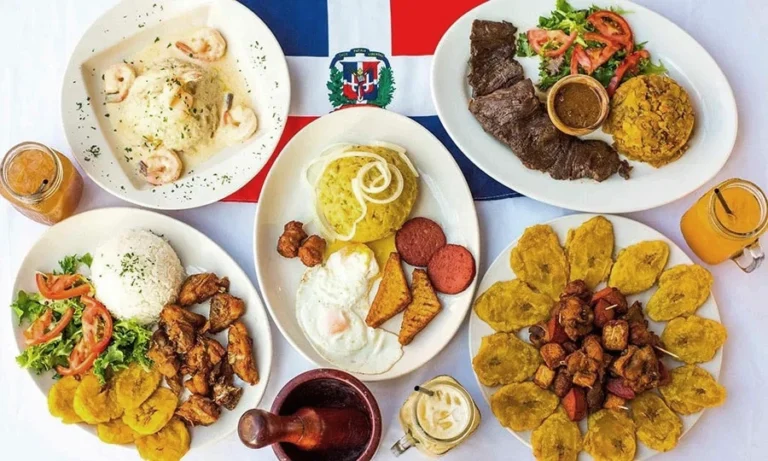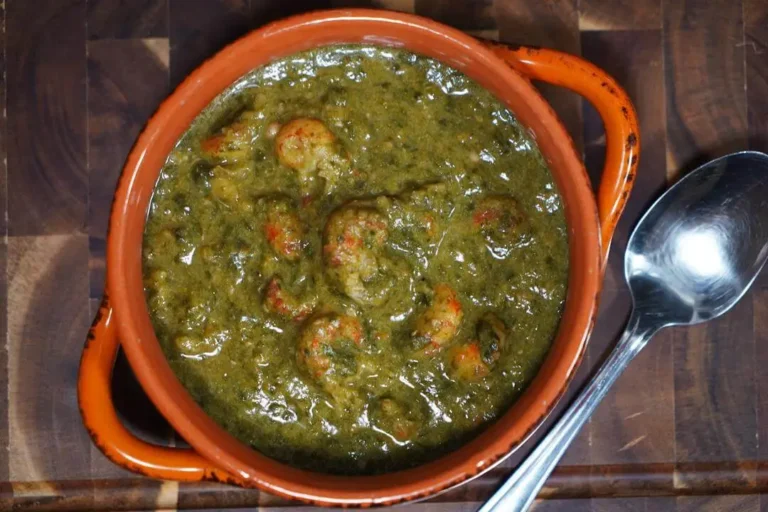Banana leaves have been a cornerstone of Caribbean cuisine for centuries, serving not only as a practical cooking tool but also as a reflection of the region’s cultural heritage and sustainable practices. Across the Caribbean, from Jamaica to Puerto Rico and the Dominican Republic, these large, green leaves are used to wrap, grill, steam, and present a variety of traditional dishes, enhancing both flavor and presentation.
In this article, we’ll explore the many roles of banana leaves in Caribbean cuisine, diving into their historical significance, health benefits, and environmental advantages. As an eco-friendly alternative to materials like aluminum foil and plastic, banana leaves contribute to more sustainable kitchen practices.

Introduction to Banana Leaves in Caribbean Cooking
Banana leaves have been a staple in Caribbean cooking for centuries, offering a unique method for preparing and serving food. These large, flexible leaves are used in various culinary applications, from wrapping food to steaming, grilling, and baking traditional dishes. The widespread use of banana leaves in the Caribbean is a reflection of the region’s reliance on locally sourced, natural resources and a deep connection to nature and sustainability.
Caribbean cuisine is known for its flavorful, slow-cooked dishes, and banana leaves play a crucial role in preserving the taste and integrity of the ingredients. Whether it’s for festive occasions or daily meals, these leaves are more than just a cooking tool; they represent a sustainable practice passed down through generations.
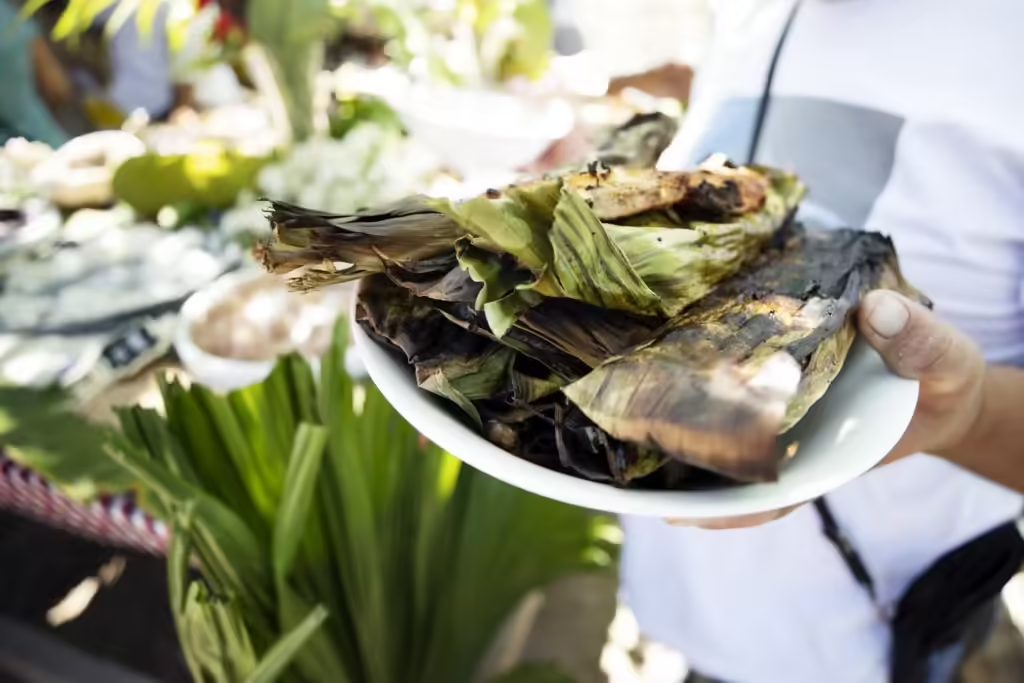
Historical and Cultural Significance of Banana Leaves in the Caribbean
Banana leaves are more than just a culinary tool in the Caribbean; they hold deep historical and cultural significance. For centuries, the indigenous peoples of the Caribbean, such as the Taíno and Arawak, used banana leaves in their cooking methods, which were later passed down through generations and across the various cultures that make up the region today.
Indigenous Cooking Techniques Using Banana Leaves
Traditional cooking techniques using banana leaves include methods like barbecuing and steaming. Dishes such as the Dominican “pasteles en hoja” or Puerto Rican “guanimes” are steamed in banana leaves, infusing the food with a subtle, earthy aroma while keeping the natural flavors intact.
The use of banana leaves for cooking in these methods helped preserve moisture, enhance flavors, and create a portable, natural way to prepare food outdoors.
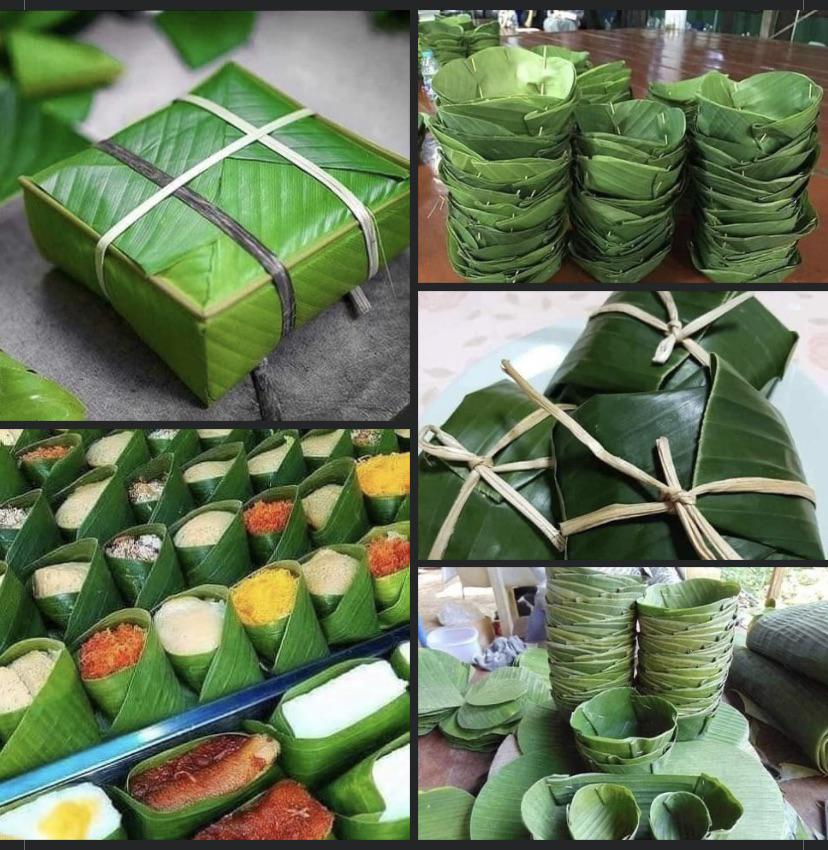
The Symbolic Meaning of Banana Leaves in Caribbean Culture
Beyond their practical use, banana leaves also hold symbolic meaning in Caribbean culture. In many Caribbean societies, banana leaves symbolize abundance, fertility, and protection. They are often used in cultural and religious ceremonies, representing a connection to the earth and the importance of nature in everyday life.
For instance, in some Caribbean regions, banana leaves are laid out as offerings during harvest celebrations, reflecting gratitude for the natural bounty.

Why Are Banana Leaves Widely Used in Caribbean Recipes?
The versatility of banana leaves in Caribbean recipes stems from their ability to enhance the cooking process while also providing natural benefits such as heat retention, aroma enhancement, and eco-friendly packaging.
Heat Retention and Aroma Enhancement
One of the key reasons banana leaves are widely used in Caribbean cooking is their heat retention properties. When food is wrapped and cooked in banana leaves, the leaves help to retain the heat, allowing for a slow and even cooking process that enhances the flavors.
Additionally, banana leaves release a subtle, earthy aroma when heated, infusing dishes with a unique fragrance that complements the region’s spices and ingredients.
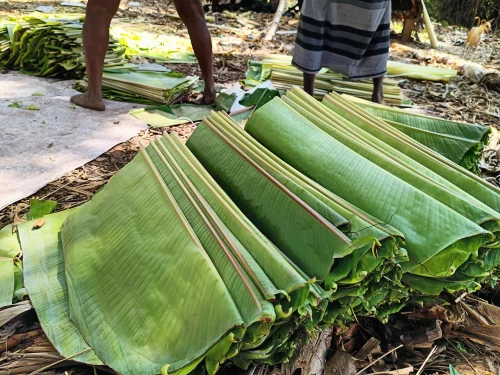
Natural Food Wrapping and Preservation
Banana leaves are not only used for cooking but also for wrapping and preserving food. In the Caribbean, it’s common to see street vendors selling snacks and meals wrapped in banana leaves.
The leaves act as a natural, biodegradable packaging material, keeping the food fresh without the need for artificial preservatives. This practice has been part of the region’s culinary tradition for generations, reflecting an emphasis on sustainability and minimal waste.

Sustainable and Eco-friendly Choice for Traditional Cooking
In today’s world of environmental consciousness, the use of banana leaves in cooking offers an eco-friendly alternative to plastic and other non-biodegradable materials. Banana leaves are readily available throughout the Caribbean, and their use in traditional cooking methods emphasizes sustainability.
Common Culinary Uses of Banana Leaves in Caribbean Cuisine
Banana leaves are prized in Caribbean cuisine for their versatility and sustainability. They are commonly used in various culinary processes, from wrapping food for steaming and grilling to acting as serving platters and decorations in traditional feasts. Their use goes beyond function—banana leaves also add a unique flavor and texture to the food, enriching the dining experience in ways that align with Caribbean traditions.
Wrapping Food for Steaming, Grilling, and Baking
One of the most common uses of banana leaves in Caribbean cooking is for wrapping food. This technique is integral to many traditional dishes, as it helps lock in moisture and infuse the food with a subtle, earthy flavor. Whether it’s steaming fish, grilling jerk chicken, or baking sweet treats, banana leaves are an essential tool in the Caribbean kitchen.
Steamed Fish Wrapped in Banana Leaves (Example Recipe)
A popular dish in the Caribbean is steamed fish wrapped in banana leaves. The fish is typically marinated with a blend of local spices, such as thyme, garlic, and scotch bonnet pepper, before being wrapped in a banana leaf and steamed over an open flame or in a pot. The banana leaf helps retain moisture and creates a flavorful, tender dish that highlights the region’s emphasis on fresh, natural ingredients.
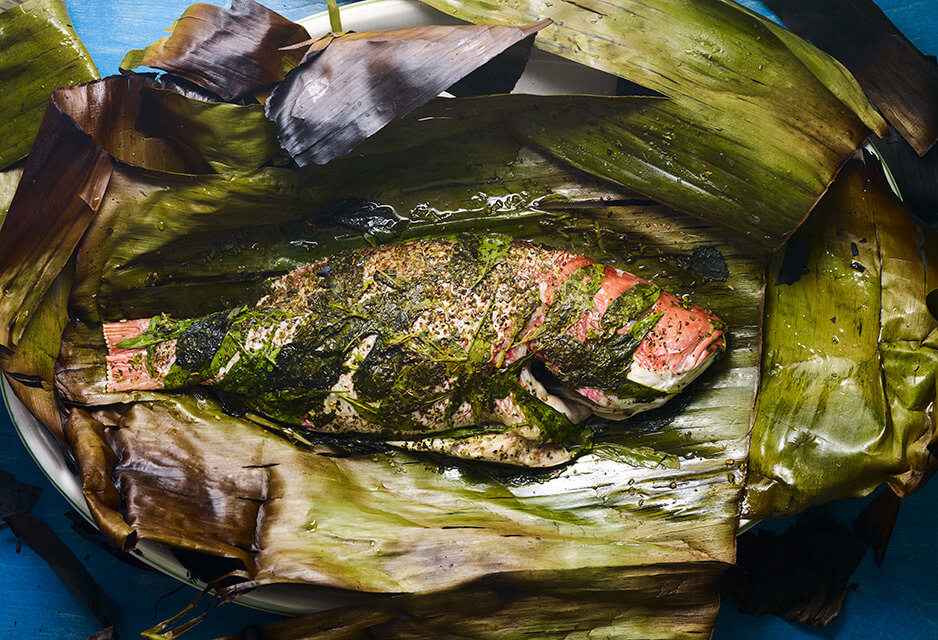
Example Recipe:
- Ingredients: Fresh fish (snapper or tilapia), garlic, thyme, lime juice, scotch bonnet pepper, salt, pepper, and banana leaves.
- Instructions: Marinate the fish with the spices and lime juice. Place the fish in the center of a banana leaf, fold it securely, and steam for 15-20 minutes until the fish is fully cooked. Serve with rice or plantains.
Grilled Jerk Chicken in Banana Leaves
Grilling jerk chicken wrapped in banana leaves is another beloved technique across the Caribbean islands, particularly in Jamaica. The banana leaf serves two purposes: it protects the chicken from direct heat, preventing it from drying out, and it also imparts a subtle, smoky flavor. This method of grilling allows the flavors of the jerk seasoning to deeply penetrate the chicken while keeping it moist and tender.
The jerk seasoning, a blend of allspice, scotch bonnet peppers, and thyme, is a signature flavor in Caribbean cuisine. Wrapping the chicken in banana leaves during the grilling process enhances the smoky aroma while adding a slight sweetness from the leaf itself.
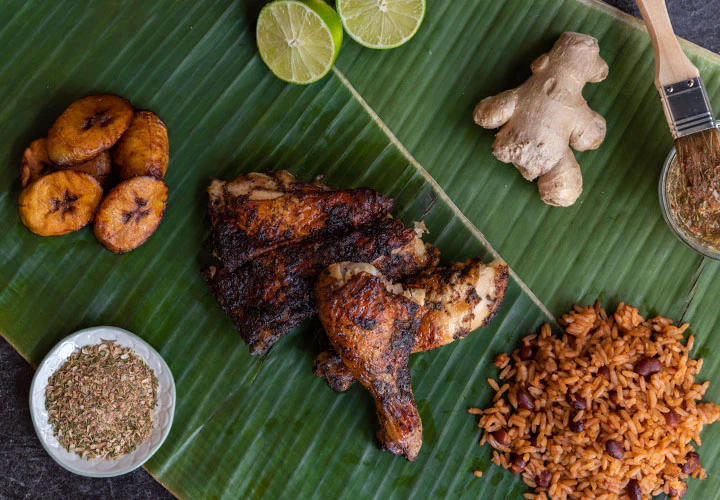
Serving Platters and Table Settings
In addition to being a cooking tool, banana leaves are also widely used as serving platters and table settings. Their large size and natural aesthetic make them ideal for presentations at traditional Caribbean gatherings, where food is often shared in a communal setting.
Presentation and Decoration: Adding a Tropical Touch
Banana leaves are often used to decorate platters and tables, adding a tropical, rustic touch to any meal. They provide a natural, green backdrop that enhances the presentation of dishes, making them visually appealing and culturally resonant. In outdoor settings, banana leaves are used as table runners, plates, and even utensils, reflecting the region’s eco-conscious mindset and its integration of nature into everyday life.
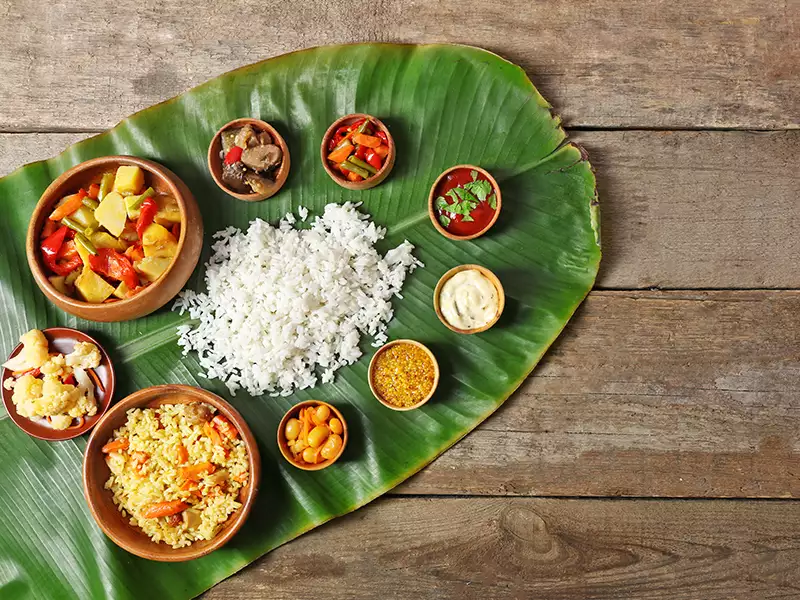
Banana Leaves in Traditional Caribbean Feasts and Ceremonies
In Caribbean feasts and ceremonies, banana leaves take on both practical and symbolic roles. During events like harvest festivals or religious celebrations, banana leaves are used as both table coverings and food wrappers.
Large dishes are often served atop banana leaves, allowing for easy clean-up and emphasizing the community’s connection to the earth. This tradition of using banana leaves at ceremonial feasts helps maintain a direct link to the ancestral ways of food preparation and consumption.
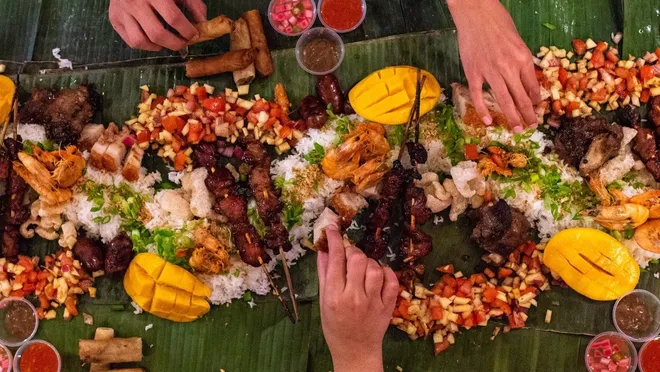
Banana Leaves in Desserts and Sweet Treats
Banana leaves aren’t just for savory dishes; they are also used in the preparation of desserts and sweet treats across the Caribbean. These leaves help to steam or bake confections while adding an extra layer of flavor and moisture retention, ensuring that desserts remain tender and fragrant.
Pasteles en Hoja (Dominican Tamales)
One of the most famous desserts made using banana leaves is Pasteles en Hoja, a traditional Dominican dish similar to tamales. These are made with a dough of mashed green plantains or yucca, filled with seasoned meats, and wrapped in banana leaves before being steamed.
The banana leaves help to lock in the moisture and prevent the dough from drying out during the cooking process, while also imparting a delicate aroma to the finished dish.
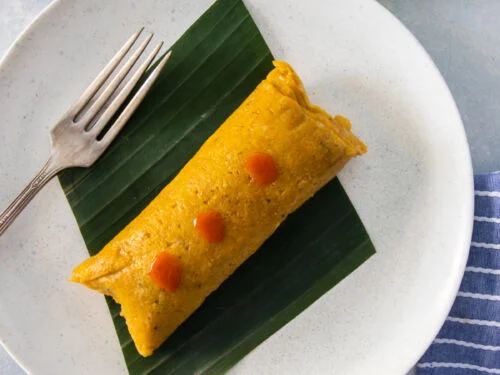
Bajan Conkies (Sweet Cornmeal Pudding)
Another sweet treat commonly prepared using banana leaves is Bajan Conkies, a traditional dish from Barbados made of cornmeal, coconut, pumpkin, sweet potato, and spices. These ingredients are combined and wrapped in banana leaves, then steamed until they form a rich, flavorful pudding. The banana leaves keep the conkies moist during steaming and add a subtle earthiness that complements the sweetness of the dish.
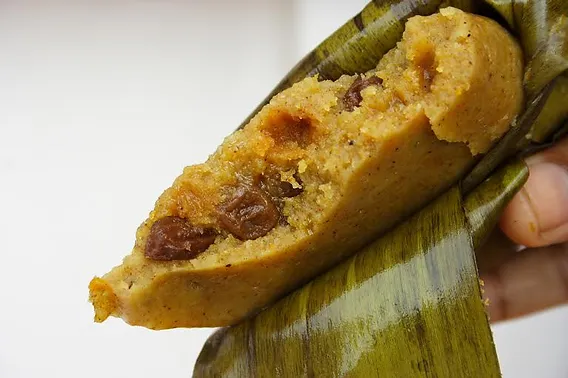
Health and Safety Benefits of Cooking with Banana Leaves
Cooking with banana leaves not only enhances the flavor and presentation of dishes, but it also provides significant health and safety benefits. Unlike synthetic materials or chemically treated packaging, banana leaves offer a natural, non-toxic cooking surface that helps retain the food’s nutritional value while minimizing the risk of exposure to harmful chemicals. Additionally, the antioxidant properties of banana leaves can even enhance the quality of the food being cooked.
- Chemical-Free and Non-Toxic Surface: Banana leaves offer a natural, biodegradable, and chemical-free surface for cooking, unlike aluminum foil or plastic wraps, which may contain harmful chemicals.
- Avoiding Harmful Chemicals: Synthetic wrappings like aluminum foil or plastic can release harmful substances, such as BPA or phthalates, when exposed to heat. Banana leaves are a healthier, toxin-free alternative.
- Eco-Friendly: Banana leaves are biodegradable and compostable, reducing environmental impact and aligning with eco-conscious practices.
- Antioxidant Properties: Banana leaves contain polyphenols, which are antioxidants that help protect food from oxidative damage.
- Polyphenols and Food Quality: The polyphenols in banana leaves can infuse into the food, preventing the oxidation of fats and oils, preserving flavor, and potentially providing health benefits like anti-inflammatory effects.
- Nutritional Preservation: Banana leaves help retain moisture and nutrients, particularly when steaming, reducing nutrient loss compared to other high-heat cooking methods.
- Steaming Efficiency: The heat-resistant, moisture-retentive properties of banana leaves allow food to cook gently, retaining vitamins like vitamin C and B, while preventing sogginess by allowing excess steam to escape.
Choosing and Preparing Banana Leaves for Caribbean Dishes
Selecting and preparing banana leaves is a crucial step in Caribbean cooking, as the quality and condition of the leaves can impact the overall flavor and presentation of the dish. Whether you’re using fresh or frozen banana leaves, knowing how to handle them properly will ensure that your food is cooked to perfection and wrapped securely.
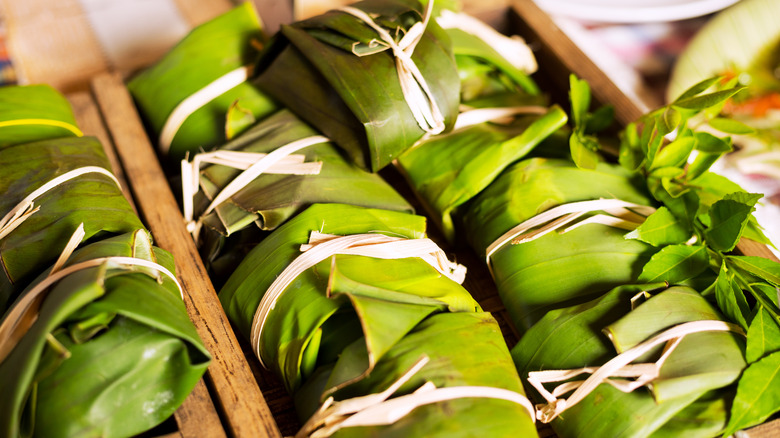
Selecting the Right Banana Leaves for Cooking
Not all banana leaves are the same, and choosing the right ones can make a difference in the final outcome of your dish. When selecting banana leaves, you’ll need to consider factors like freshness, size, and condition. This section will guide you through the process of selecting the best banana leaves for Caribbean cooking.
Fresh vs. Frozen Banana Leaves: What’s the Difference?
When it comes to cooking with banana leaves, you have two main options: fresh or frozen. Fresh banana leaves are typically preferred for their vibrant color, flexibility, and rich aroma, but frozen banana leaves are a practical alternative, especially for those who do not have access to fresh leaves.

- Fresh Banana Leaves: These are ideal for wrapping food because they are pliable and full of natural moisture. However, fresh leaves can sometimes be difficult to find outside tropical regions.
- Frozen Banana Leaves: These are more readily available in supermarkets and international food stores. They are often pre-cleaned and cut into manageable sizes. While frozen leaves are convenient, they can sometimes be brittle when thawed, which makes them more prone to tearing during wrapping.
The choice between fresh and frozen comes down to availability and convenience, but both types can be used effectively in Caribbean cooking if prepared properly.
Recognizing Quality and Freshness
To ensure you’re getting the best banana leaves for cooking, it’s important to recognize quality and freshness. Whether you are buying fresh or frozen, look for the following indicators of high-quality banana leaves:
- Color: The leaves should have a rich, vibrant green color. Avoid leaves that are yellowing or have brown spots, as these may be signs of aging or damage.
- Texture: Fresh banana leaves should feel smooth and supple, with no cracks or tears. If buying frozen leaves, check that the packaging is intact and that the leaves have not been overly dried out during the freezing process.
- Size: Choose large, broad leaves that can wrap food securely without breaking. Larger leaves are better for grilling and steaming, while smaller leaves may be used for decoration or lining platters.
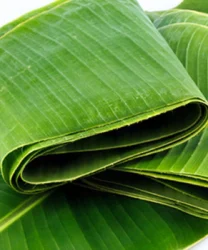
Prepping Banana Leaves: Tips for Cleaning and Softening
Before using banana leaves in Caribbean dishes, they need to be properly prepped. This includes cleaning them to remove any dirt or residue and softening them to make them flexible enough for wrapping food. Prepping banana leaves ensures they perform well in cooking and adds a layer of hygiene and safety.
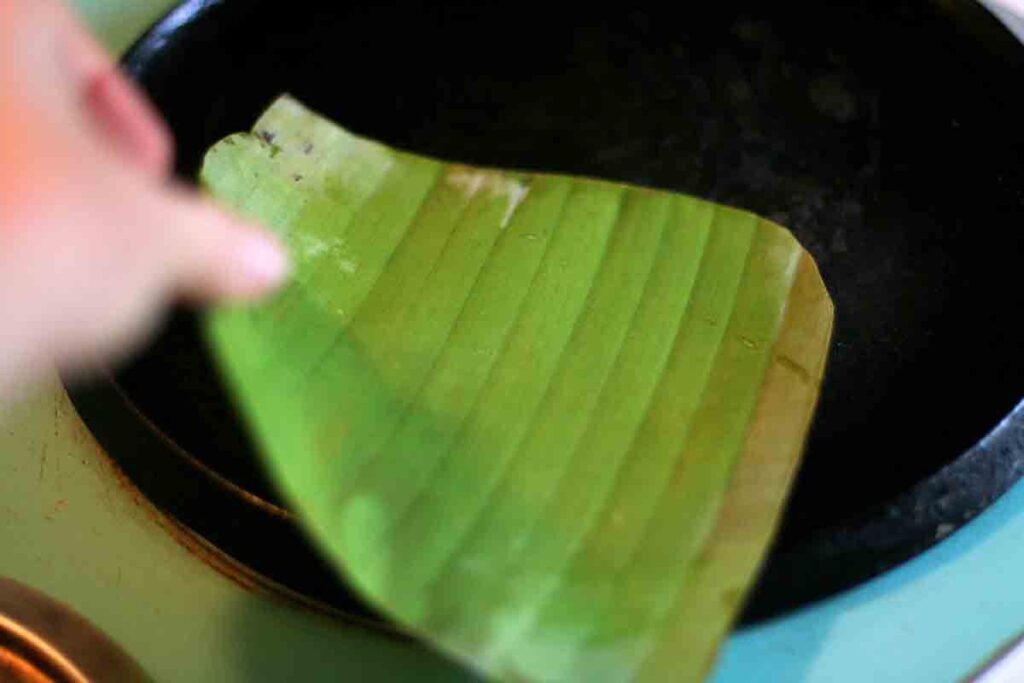

How to Properly Clean Banana Leaves for Cooking
Banana leaves, especially fresh ones, need to be thoroughly cleaned before use to remove any dirt, dust, or insects that may be on their surface. Follow these steps to properly clean banana leaves for cooking:
- Rinse with Water: Begin by rinsing the banana leaves under cool running water to remove any loose dirt and particles.
- Wipe with a Damp Cloth: After rinsing, gently wipe both sides of the leaf with a damp cloth or sponge to ensure all remaining dirt is cleaned off. Be careful not to tear the leaf, especially near the edges.
- Pat Dry: Use a clean towel to pat the banana leaves dry before using them for wrapping or lining dishes. This helps prevent excess moisture from affecting the texture of the food.
If using frozen banana leaves, defrost them first before cleaning, following the same steps once they have thawed.
Techniques for Softening and Making Banana Leaves More Flexible
Once banana leaves are cleaned, they need to be softened to make them more pliable for wrapping food. Stiff banana leaves can crack or tear during the cooking process, so softening them is essential for successful use in grilling, steaming, or baking.
Here are some common techniques to soften banana leaves:
- Passing Over an Open Flame: One traditional method for softening banana leaves is to quickly pass them over an open flame or gas burner. This process heats the leaves just enough to make them flexible, but not so much that they burn. Hold the leaf a few inches above the flame, moving it back and forth until it becomes soft and shiny.
- Steaming the Leaves: If you don’t have access to an open flame, another effective method is to steam the banana leaves for a few minutes. This softens the fibers of the leaves, making them more malleable and easier to work with.
- Brief Boiling: Alternatively, you can briefly immerse the banana leaves in boiling water for 30 seconds to 1 minute. This will soften the leaves, after which they should be removed and allowed to cool slightly before use.
Softening banana leaves not only prevents them from cracking, but also helps them mold more easily around the food, ensuring a tight seal that retains moisture and flavor.
Caribbean Recipes Featuring Banana Leaves
Banana leaves are an essential ingredient in many traditional Caribbean recipes. They are used to wrap and cook a variety of dishes, from savory meals to sweet treats. The natural properties of banana leaves help retain moisture, enhance flavor, and add a distinct, earthy aroma to the food. In this section, we’ll explore some classic Caribbean recipes that rely on banana leaves for both cooking and presentation.
Banana Leaf-Wrapped Fish with Herbs and Spices
One of the most popular and flavorful ways to use banana leaves in Caribbean cuisine is to wrap fish with a blend of herbs and spices. This technique not only keeps the fish moist and tender during cooking, but the banana leaves also infuse the dish with a subtle, earthy aroma that complements the Caribbean spices.
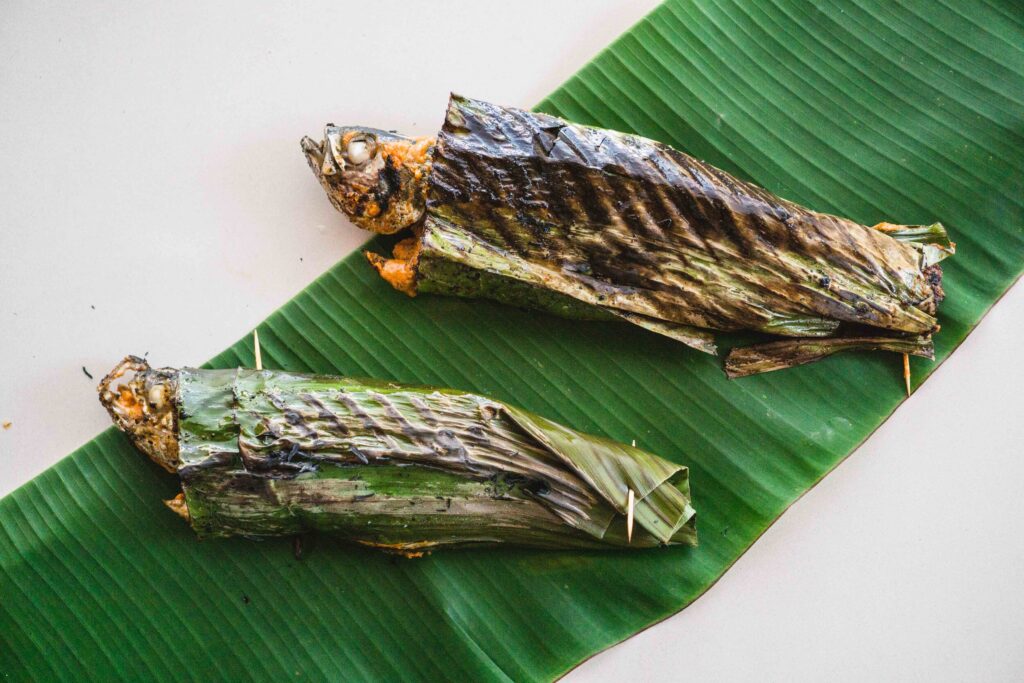
Step-by-Step Guide and Ingredients
Ingredients:
- 2 large banana leaves
- 2 whole fish (snapper, tilapia, or other local fish)
- 4 cloves garlic (minced)
- 1 small bunch fresh thyme
- 1 small bunch cilantro
- 1 scotch bonnet pepper (finely chopped)
- Juice of 2 limes
- 1 tablespoon olive oil
- Salt and pepper to taste
Step-by-Step Guide:
- Prepare the Banana Leaves: Clean and soften the banana leaves by passing them over an open flame or steaming them for a few minutes.
- Marinate the Fish: Rinse the fish and pat dry. Rub the fish with a mixture of garlic, thyme, cilantro, scotch bonnet pepper, lime juice, olive oil, salt, and pepper. Allow the fish to marinate for at least 20 minutes to let the flavors penetrate.
- Wrap the Fish: Place each fish in the center of a banana leaf. Fold the leaf over the fish, tucking the ends under to form a secure wrap.
- Cook the Fish: You can either grill or steam the fish. If grilling, cook the fish for about 10-15 minutes on each side over medium heat, or until the fish is fully cooked. If steaming, place the wrapped fish in a steamer for 20-25 minutes.
- Serve: Unwrap the fish just before serving to preserve the aroma. Serve with side dishes such as rice and peas, or fried plantains.
Best Side Dishes to Complement the Dish
Banana leaf-wrapped fish pairs beautifully with a variety of traditional Caribbean side dishes. Some of the best options include:
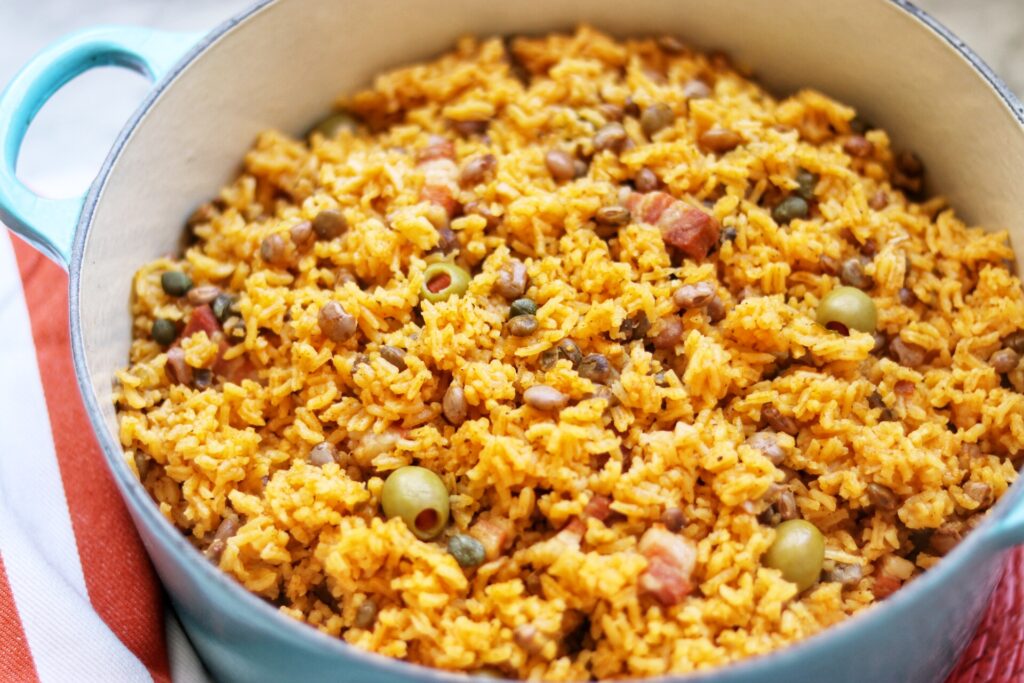
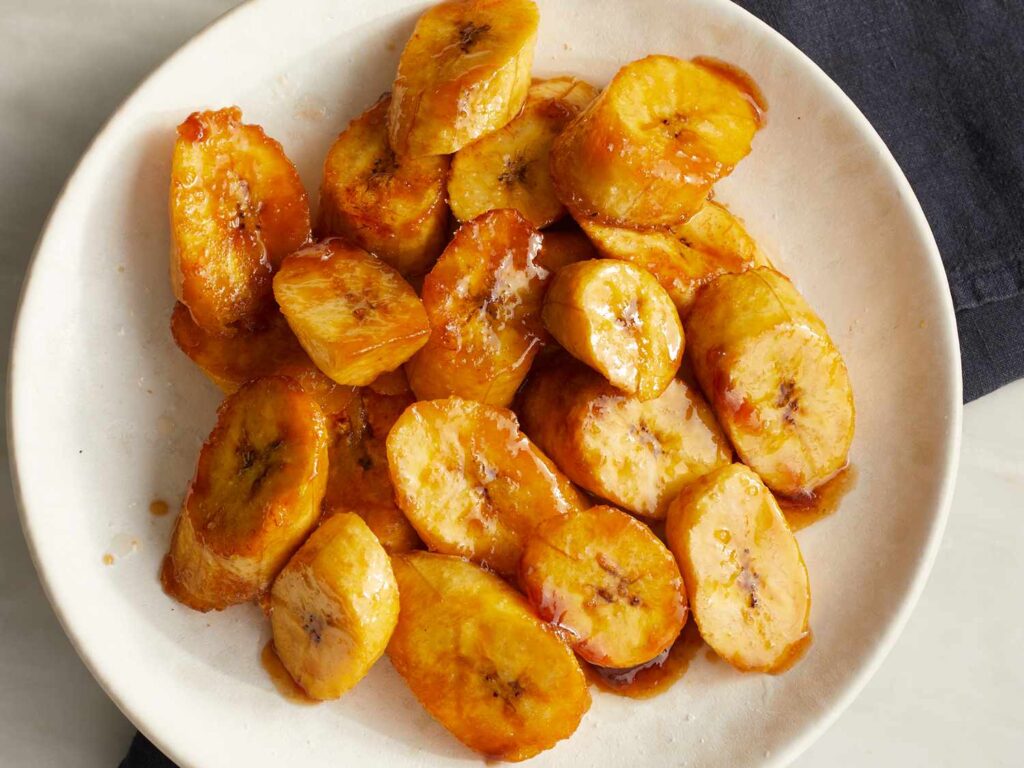
- Rice and Peas: A staple in Caribbean cuisine, rice and peas cooked with coconut milk, thyme, and allspice are the perfect complement to the tender fish.
- Fried Plantains: Sweet fried plantains add a delightful contrast to the savory, spicy fish.
- Cassava Bread: A gluten-free flatbread made from cassava, commonly served in the Caribbean, provides a crunchy texture to round out the meal.
Puerto Rican Pasteles
Pasteles are a traditional Puerto Rican dish that is especially popular during the holiday season. These savory treats are made by wrapping a seasoned meat filling in a green plantain or yucca dough, then wrapping the entire bundle in banana leaves before steaming.
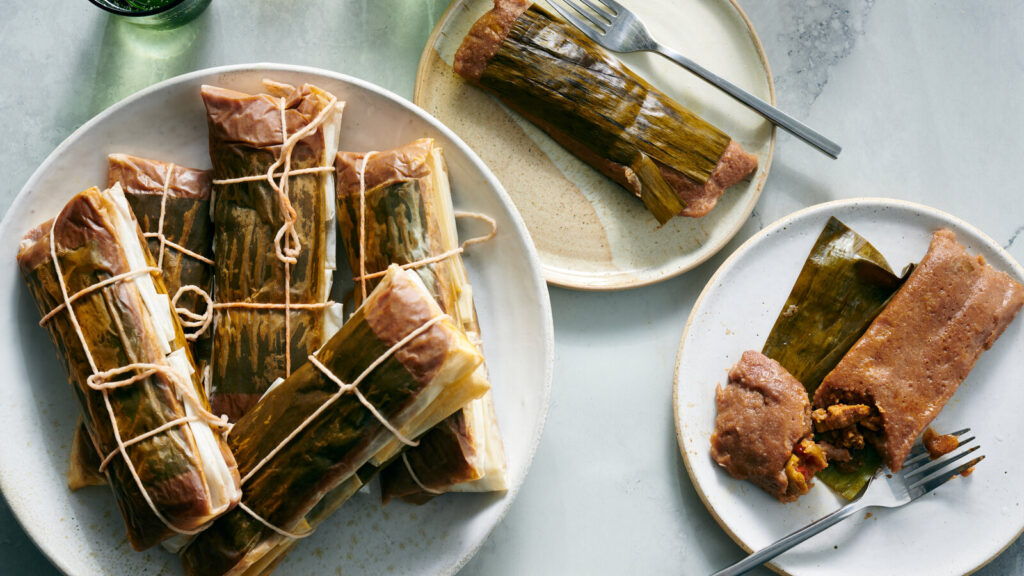
Traditional Ingredients and Cooking Method
Ingredients for the Dough (Masa):
- 4 green plantains (peeled and grated)
- 2 pounds of yucca (peeled and grated)
- 1 tablespoon achiote oil (for color)
- 1 teaspoon salt
Ingredients for the Filling:
- 1 pound pork shoulder (cut into small pieces)
- 1/4 cup sofrito (blend of onions, garlic, peppers, and cilantro)
- 2 tablespoons tomato sauce
- 1/2 cup olives
- 1/4 cup capers
- 1 tablespoon cumin
- Salt and pepper to taste
Cooking Method:
- Prepare the Dough: Grate the plantains and yucca, then mix them with achiote oil and salt to form a smooth dough (masa).
- Prepare the Filling: In a large pan, cook the pork with sofrito, tomato sauce, olives, capers, cumin, salt, and pepper until tender.
- Assemble the Pasteles: Cut the banana leaves into squares and soften them over an open flame. Place a spoonful of dough in the center of each banana leaf, then add a spoonful of the pork filling. Fold the leaf over the filling and tie it securely with kitchen string.
- Cook the Pasteles: Steam the pasteles for about an hour, or until the dough is firm and cooked through.
Variations Across Caribbean Islands
While Puerto Rican pasteles are the most well-known version of this dish, similar variations can be found across the Caribbean:
- Dominican Pasteles en Hoja: Made with a dough of green plantains or yucca, these pasteles are steamed in banana leaves and filled with pork or chicken.
- Trinidadian Pastelle: Similar to Puerto Rican pasteles, but with a cornmeal dough instead of plantains, often filled with a spicy beef mixture.
Each island brings its own unique twist to this festive dish, but the use of banana leaves remains consistent across the region, serving as both a wrapper and flavor enhancer.
Jamaican Blue Drawers (Dukunu)
Jamaican Blue Drawers, also known as Dukunu, is a traditional sweet dish made from cornmeal, coconut, and spices, wrapped in banana leaves and steamed. This dessert is both comforting and nostalgic for many in Jamaica, often served during special occasions.

Preparing the Sweet Cornmeal Filling
Ingredients:
- 2 cups cornmeal
- 1/2 cup grated coconut
- 1/2 cup brown sugar
- 1 teaspoon cinnamon
- 1 teaspoon nutmeg
- 1/2 teaspoon vanilla extract
- 1 cup coconut milk
- Pinch of salt
Steps:
- Mix the Filling: Combine the cornmeal, grated coconut, brown sugar, cinnamon, nutmeg, and salt in a large bowl. Gradually add the coconut milk and vanilla extract until the mixture is well combined and forms a thick batter.
- Rest the Batter: Let the mixture sit for about 10-15 minutes to allow the cornmeal to absorb the liquid.
Wrapping and Steaming Techniques
- Prepare the Banana Leaves: Clean and soften the banana leaves by steaming them or passing them over an open flame.
- Wrap the Dukunu: Place a spoonful of the cornmeal mixture in the center of a banana leaf. Fold the leaf into a neat package, ensuring the edges are sealed to prevent any leakage during steaming.
- Steam the Blue Drawers: Place the wrapped dukunu in a steamer and cook for 45 minutes to an hour, or until the cornmeal is firm and fully cooked. The banana leaves will impart a mild, sweet flavor to the cornmeal filling as it steams.
- Serve: Blue drawers are traditionally enjoyed warm and can be served as a dessert or a sweet snack.
Exploring Regional Variations in Banana Leaf Cooking Across the Caribbean
Banana leaf cooking is a unifying thread across many Caribbean cultures, but the ways in which it is used vary greatly depending on the island and its unique blend of culinary traditions. From Jamaica to Puerto Rico to the Dominican Republic, banana leaves serve as more than just a cooking tool; they are a symbol of the diverse cultural influences that have shaped Caribbean cuisine over centuries.
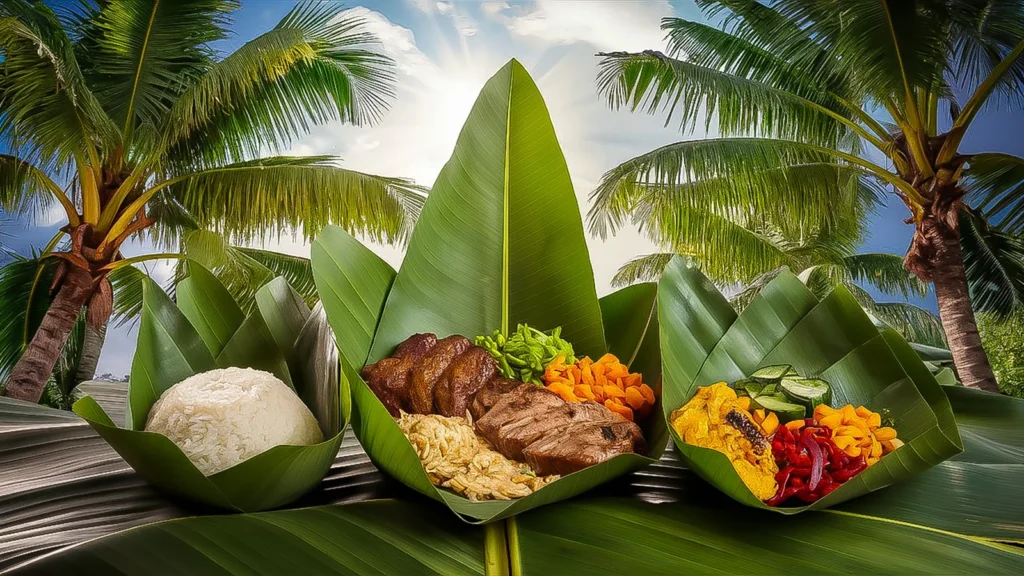
Differences Between Jamaican, Puerto Rican, and Dominican Recipes
Each Caribbean island has its own distinct way of using banana leaves in traditional dishes. While the cooking techniques are similar—often involving steaming or grilling—the ingredients and flavor profiles vary, reflecting the local spices and culinary preferences of each region.
Unique Flavors and Ingredients in Each Region
- Jamaica: In Jamaica, banana leaves are often used in Jerk dishes, where meat or fish is seasoned with a fiery blend of allspice, scotch bonnet peppers, and thyme, then grilled in the banana leaves to lock in moisture and flavor. One notable dish is Jerk Chicken wrapped in banana leaves, which combines spicy, smoky flavors with the subtle earthiness of the banana leaves.
- Puerto Rico: Puerto Rican cuisine makes extensive use of banana leaves, particularly in dishes like Pasteles. These savory parcels are filled with a rich mixture of pork, sofrito, and green plantain dough, all wrapped in banana leaves and steamed to perfection. The use of achiote oil (annatto) gives the pasteles their signature orange hue, a flavor element not commonly found in other islands.
- Dominican Republic: In the Dominican Republic, banana leaves are used in Pasteles en Hoja, which are similar to Puerto Rican pasteles but with regional twists. Dominicans often use a yucca-based dough (in addition to plantains) and may include fillings such as chicken or seafood, offering a milder flavor profile compared to the spicier versions in Jamaica.
Cooking Techniques That Set Each Apart
- Jamaica: Grilling is a common technique in Jamaican banana leaf cooking, particularly for Jerk-style dishes. The use of an open flame imparts a smoky, charred flavor to the food, while the banana leaves help retain moisture, ensuring that the meat remains juicy.
- Puerto Rico: In Puerto Rico, steaming is the most popular technique for banana leaf dishes like Pasteles. The slow, gentle heat of steaming allows the flavors of the fillings to meld together, while the banana leaves help the food cook evenly without drying out.
- Dominican Republic: Dominicans also favor steaming for dishes like Pasteles en Hoja, but grilling is less common. The focus is often on maintaining the integrity of the starchy dough and keeping the filling moist, so steaming provides the best results.
Influence of Indigenous, African, and European Traditions
The culinary traditions of the Caribbean have been shaped by a rich tapestry of indigenous, African, and European influences, each of which contributed to the way banana leaves are used in cooking. Understanding the historical context of these influences gives deeper meaning to the dishes we enjoy today.
Historical Context of Each Culinary Influence
- Indigenous Influence: The indigenous Taíno and Arawak peoples were the first to use banana leaves in cooking, long before European colonization. They developed techniques like steaming and grilling over open fires, using banana leaves to wrap food and preserve it during cooking. Many of the traditional methods, such as steaming fish or wrapping meats, can be traced back to these early inhabitants of the Caribbean.
- African Influence: The African diaspora brought enslaved peoples to the Caribbean, along with their culinary traditions. In many African cultures, banana leaves were used for cooking, particularly in steaming and grilling. This influence can be seen in dishes like Jamaican Dukunu (similar to African tamales) and the widespread use of banana leaves in festive and community-based cooking.
- European Influence: European colonization introduced new ingredients and cooking techniques, such as the use of seasoned meat fillings in dishes like Puerto Rican Pasteles. The Spanish and French, in particular, introduced the concept of adding rich, savory fillings wrapped in banana leaves, which later evolved into some of the region’s most iconic dishes.
How Each Culture Adapted Banana Leaves in Cooking
- Indigenous Adaptations: The indigenous peoples of the Caribbean originally used banana leaves for their availability and versatility, a practice that persists today. Banana leaves were not only used in cooking but also for serving and preserving food. These early methods of steaming and grilling have been carried into modern Caribbean cooking, where banana leaves are still used for their moisture-retaining and flavor-enhancing properties.
- African Adaptations: African culinary traditions adapted quickly to the availability of banana leaves in the Caribbean. In addition to using them for cooking, Africans also brought methods of communal eating and celebration, where banana leaves were used as plates or table coverings. This communal aspect of cooking and sharing food wrapped in banana leaves is still prevalent in Caribbean celebrations and large gatherings.
- European Adaptations: European settlers introduced rich, spice-heavy marinades and stuffed dishes wrapped in banana leaves, blending these with indigenous and African techniques. For example, the European influence is evident in Puerto Rican Pasteles, where Spanish spices and flavors were incorporated into an indigenous technique. Similarly, Dominican tamales evolved from a mix of indigenous and European methods, adding new fillings and seasonings to traditional banana leaf-wrapped dishes.
Sustainability and Environmental Impact of Using Banana Leaves
In addition to their versatility in cooking, banana leaves are an eco-friendly and sustainable alternative to commonly used materials like aluminum foil and plastic. Their widespread use in Caribbean cuisine reflects not only a deep-rooted cultural tradition but also a practical solution to environmental concerns.
- Eco-Friendly Alternative: Banana leaves are a biodegradable, compostable substitute for aluminum foil and plastic wrap in cooking.
- No Harmful Chemicals: They break down naturally without releasing toxins, unlike plastics that pollute the environment.
- Renewable Resource: Banana plants regenerate their leaves, allowing multiple harvests without damaging the plant.
- Sustainable Cooking: Using banana leaves promotes eco-friendly kitchen practices and traditional cooking methods.
- Boosts Local Economies: Farmers in the Caribbean benefit economically by selling banana leaves, turning a byproduct into an additional income source.
- Sustainable Harvesting: Banana leaves can be harvested without harming the plant, ensuring a continuous and eco-friendly supply.
- Job Opportunities: The growing demand for banana leaves can create jobs in rural communities, helping to alleviate poverty.
- Income Diversification: Farmers gain financial stability by selling both bananas and their leaves.
- Export Growth: With global interest in sustainable solutions, banana leaves could become a valuable export product.
FAQS
Final Thoughts
Banana leaves have long been a cornerstone of Caribbean cooking, offering not only a versatile tool for preparing food but also a deep connection to the region’s rich culinary heritage. From their practical use as a natural wrapper for steaming and grilling to their role in enhancing flavor and presentation, banana leaves represent a unique blend of tradition, sustainability, and flavor.
Celebrating the Rich Culinary Heritage of the Caribbean
The use of banana leaves in Caribbean cuisine is a testament to the region’s cultural diversity and resourcefulness. Passed down from indigenous peoples, influenced by African, European, and Asian traditions, banana leaf cooking reflects the melting pot of cultures that define Caribbean food. These leaves are more than just a cooking tool—they are a symbol of sustainability, community, and the harmony between people and nature.
By preserving traditional cooking methods and incorporating them into modern practices, Caribbean cuisine continues to thrive, blending ancient techniques with contemporary flavors. The simple act of wrapping food in banana leaves connects cooks to the earth, to their ancestors, and to a shared cultural history that spans generations.
Encouraging Readers to Experiment with Banana Leaves in Their Own Cooking
We encourage you, as a reader, to experiment with banana leaves in your own cooking, whether you’re recreating traditional Caribbean recipes or putting your own twist on everyday dishes. Their versatility makes them a great addition to any kitchen, adding unique flavors and sustainable benefits to your meals.
Even if you’ve never cooked with banana leaves before, starting with simple dishes—like grilled fish or steamed vegetables—can be an easy and rewarding introduction. Whether you’re hosting a summer barbecue or a family dinner, banana leaves can enhance the presentation, flavor, and environmental footprint of your cooking.
Tips for Incorporating Banana Leaves in Everyday Dishes
Incorporating banana leaves into your regular cooking routine doesn’t have to be complicated. Here are some simple tips for using banana leaves in everyday dishes:
- Steaming Vegetables: Try wrapping your favorite vegetables—like carrots, zucchini, or sweet potatoes—in banana leaves before steaming. This keeps them moist and adds a subtle, earthy flavor.
- Grilling Meats and Fish: Instead of using aluminum foil for grilling, wrap your meats or fish in banana leaves. This method not only locks in moisture but also helps prevent over-charring and adds a natural smoky aroma to the dish.
- Lining Platters or Plates: For a decorative and eco-friendly touch, line serving platters or plates with banana leaves before arranging your food. This works especially well for tropical-themed meals, making the presentation both practical and visually appealing.
- Using Banana Leaves in Desserts: Get creative with your desserts by steaming sweet treats like cornmeal puddings or tamales in banana leaves. They help retain moisture, making these dishes tender and flavorful.
Banana leaves are much more than a cooking tool—they are a gateway to the rich culinary traditions of the Caribbean. Whether you’re cooking a traditional dish like Puerto Rican pasteles or simply using banana leaves to elevate your everyday meals, their versatility, sustainability, and cultural significance are undeniable. As you experiment with banana leaves in your own kitchen, you’ll not only enjoy the unique flavors they bring to your food but also contribute to a more eco-friendly and authentic approach to cooking.
Disclosure: Our blog contains affiliate links to products. We may receive a commission for purchases made through these links. However, this does not impact our reviews and comparisons. We try our best to keep things fair and balanced, in order to help you make the best choice for you.
